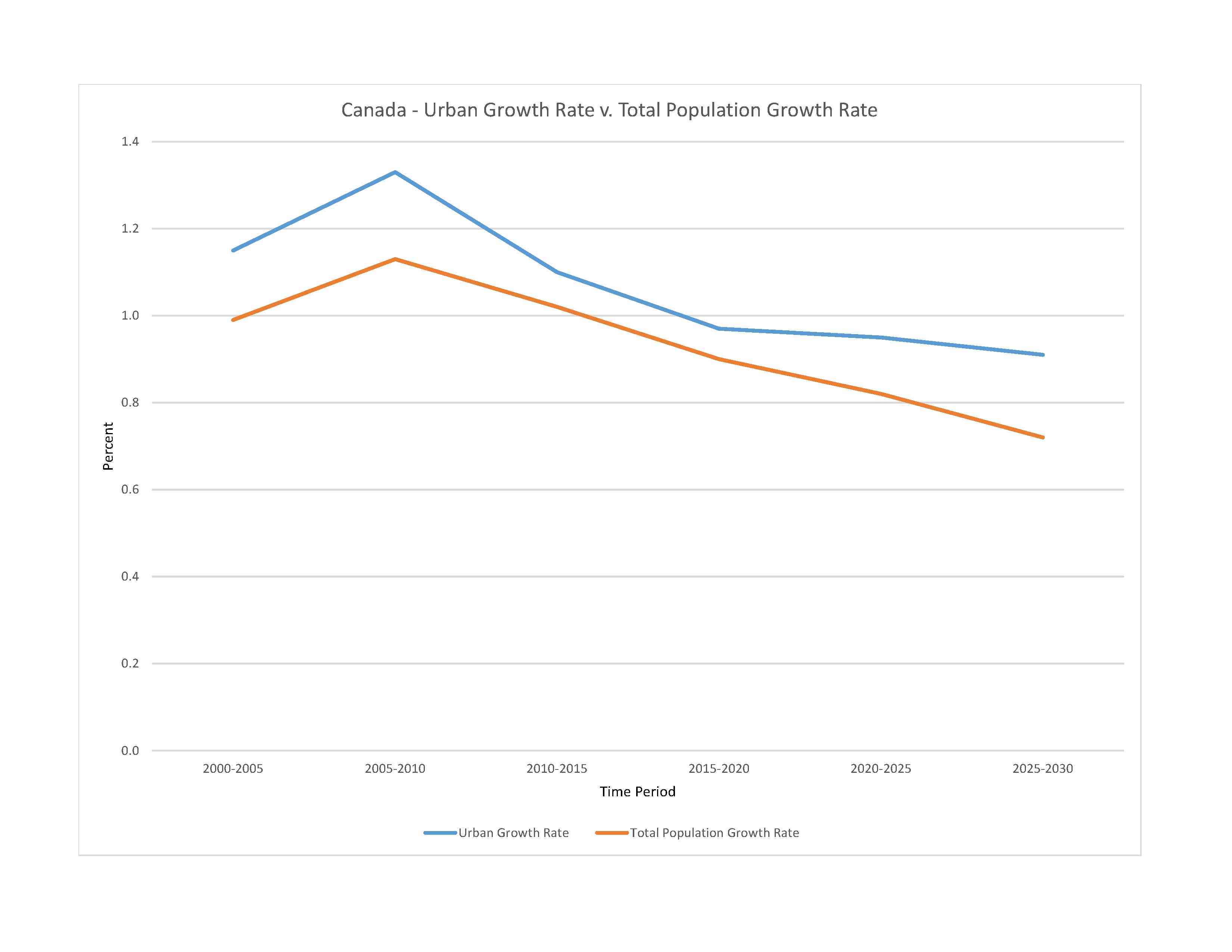
38,516,736 (2023 est.)
noun: Canadian(s)
adjective: Canadian
Canadian 15.6%, English 14.7%, Scottish 12.1%, French 11%, Irish 12.1%, German 8.1%, Chinese 4.7%, Italian 4.3%, First Nations 1.7%, Indian 3.7%, Ukrainian 3.5%, Metis 1.5% (2021 est.)
note: percentages add up to more than 100% because respondents were able to identify more than one ethnic origin
English (official) 87.1%, French (official) 29.1%, Chinese languages 4.2%, Spanish 3.2%, Punjabi 2.6%, Arabic 2.4%, Tagalog 2.3%, Italian 1.5% (2022 est.)
major-language sample(s):
The World Factbook, the indispensable source for basic information. (English)
The World Factbook, une source indispensable d'informations de base. (French)
French audio sample:
Christian 53.3%, Muslim 4.9%, Hindu 2.3%, Sikh 2.1%, Buddhist 1%, Jewish 0.9%, Traditional (North American Indigenous) 0.2%, other religions and traditional spirituality 0.6%, none 34.6% (2021 est.)
0-14 years: 15.65% (male 3,097,585/female 2,930,056)
15-64 years: 63.85% (male 12,367,172/female 12,224,077)
65 years and over: 20.5% (2023 est.) (male 3,630,580/female 4,267,266)
total dependency ratio: 52.1
youth dependency ratio: 23.9
elderly dependency ratio: 28.2
potential support ratio: 3.6 (2021 est.)
total: 42.4 years (2023 est.)
male: 41.2 years
female: 43.5 years
0.73% (2023 est.)
10.1 births/1,000 population (2023 est.)
8.2 deaths/1,000 population (2023 est.)
5.4 migrant(s)/1,000 population (2023 est.)
vast majority of Canadians are positioned in a discontinuous band within approximately 300 km of the southern border with the United States; the most populated province is Ontario, followed by Quebec and British Columbia
urban population: 81.9% of total population (2023)
rate of urbanization: 0.95% annual rate of change (2020-25 est.)

6.372 million Toronto, 4.308 million Montreal, 2.657 million Vancouver, 1.640 million Calgary, 1.544 million Edmonton, 1.437 million OTTAWA (capital) (2023)
at birth: 1.05 male(s)/female
0-14 years: 1.06 male(s)/female
15-64 years: 1.01 male(s)/female
65 years and over: 0.85 male(s)/female
total population: 0.98 male(s)/female (2023 est.)
29.4 years (2019 est.)
11 deaths/100,000 live births (2020 est.)
total: 4.3 deaths/1,000 live births (2023 est.)
male: 4.6 deaths/1,000 live births
female: 4 deaths/1,000 live births
total population: 84 years (2023 est.)
male: 81.7 years
female: 86.4 years
1.57 children born/woman (2023 est.)
0.77 (2023 est.)
N/A
improved: urban: 99.3% of population
rural: 99.1% of population
total: 99.2% of population
unimproved: urban: 0.7% of population
rural: 0.9% of population
total: 0.8% of population (2020 est.)
12.9% of GDP (2020)
2.44 physicians/1,000 population (2019)
2.5 beds/1,000 population (2019)
improved: urban: 99.1% of population
rural: 98.9% of population
total: 99% of population
unimproved: urban: 0.9% of population
rural: 1.1% of population
total: 1% of population (2020 est.)
29.4% (2016)
total: 8 liters of pure alcohol (2019 est.)
beer: 3.5 liters of pure alcohol (2019 est.)
wine: 2 liters of pure alcohol (2019 est.)
spirits: 2.1 liters of pure alcohol (2019 est.)
other alcohols: 0.4 liters of pure alcohol (2019 est.)
total: 13% (2020 est.)
male: 15.3% (2020 est.)
female: 10.7% (2020 est.)
N/A
52.2% (2023 est.)
5.2% of GDP (2020 est.)
total population: NA
male: NA
female: NA
total: 17 years
male: 16 years
female: 17 years (2020)
NOTE: The information regarding Canada on this page is re-published from the 2024 World Fact Book of the United States Central Intelligence Agency and other sources. No claims are made regarding the accuracy of Canada 2024 information contained here. All suggestions for corrections of any errors about Canada 2024 should be addressed to the CIA or the source cited on each page.
This page was last modified 04 May 24, Copyright © 2024 ITA all rights reserved.